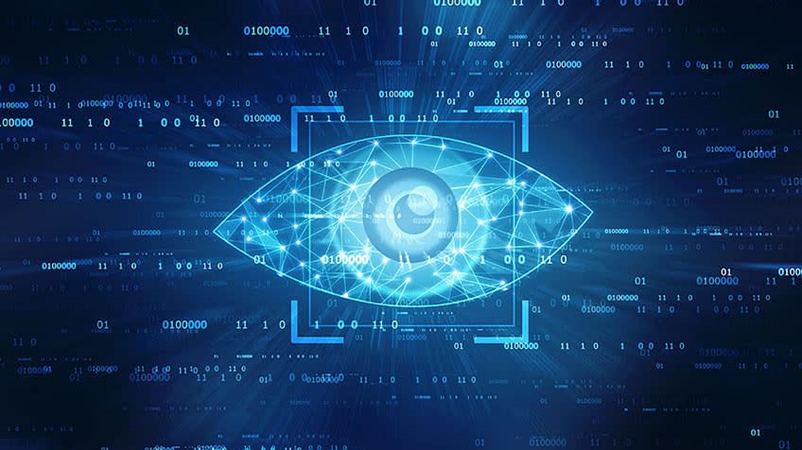Optical character recognition (OCR) is a highly efficient business process technology that saves time and money by utilizing automated data extraction and storage capabilities. OCR has become an integral part of information processing for industries that receive information from print media such as banking, healthcare, insurance and logistics. At DreamCatcher Software, we use OCR in our DreamCatcher agile collaboration software to help efficiently capture accurate business requirements and accelerate requirements gathering and design workflows.
What is OCR?
Often referred to as text recognition, OCR is the process that converts an image of text into a machine-readable text format. An OCR program extracts and repurposes data from scanned documents, camera images and image-only pdfs. OCR software singles out letters on the image, converts them into words and then places the words into sentences, thus enabling the ability to edit the original content. It also eliminates the need for manual data entry.
How does OCR Work?
OCR systems use a combination of hardware and software to convert physical, printed documents into machine-readable text. Hardware, such as an optical scanner, copies or reads text. Once all pages are copied, the OCR software converts the document into a two-color or black-and-white version. The scanned-in image or bitmap is analyzed for light and dark areas, and the dark areas are identified as characters that need to be recognized, while light areas are identified as background. The dark areas are then processed to find alphabetic letters or numeric digits. Other pre-processing steps include de-skewing (tilting the scanned document slightly to fix alignment issues during the scan), de-speckling (removing any digital image spots or smoothing the edges of text images) and cleaning up boxes and lines in the image.
Once pre-processing steps are completed, characters are then identified using one of two algorithms — pattern recognition or feature recognition. Pattern recognition is used when the OCR program is fed examples of text in various fonts and formats to compare and recognize characters in the scanned document or image file. Pattern recognition works by isolating a character image, called a glyph, and comparing it with a similarly stored glyph. Feature recognitions occurs when the OCR applies rules regarding the features of a specific letter or number to recognize characters in the scanned document. Feature recognition breaks down the glyphs into features such as lines, closed loops, line direction, and line intersections. It then uses these features to find the best match or the nearest neighbor among its various stored glyphs.

What are the types of OCR?
There are various types of OCR technologies characterized by their use and application. Simple OCR software works by storing many different font and text image patterns as templates. The OCR software uses pattern-matching algorithms to compare text images, character by character, to its internal database. OCR software can also take advantage of artificial intelligence (AI) to implement more advanced methods of intelligent character recognition (ICR). ICR software uses advanced methods that train machines to behave like humans by using machine learning software. A machine learning system analyzes the text over many levels, processing the image repeatedly. It looks for different image attributes, such as curves, lines, intersections, and loops, and combines the results of all these different levels of analysis to get the final result. Intelligent word recognition (IWR) systems work on the same principles as ICR, but process whole word images instead of preprocessing the images into characters. Finally, optical mark recognition identifies logos, watermarks, and other text symbols in a document.
Quantifying the Efficiencies of Using OCR in Automated Processes
The primary benefit of the OCR technology is that it simplifies the data-entry process by creating effortless text searches, editing and storage. OCR allows users to store files on their computers or the cloud, laptops and other devices, ensuring constant access to all documentation. This accelerates workflows, automates document routing and content processing and centralizes and secures data.
As described in our previous blog, the preferred metric for measuring the customer value of business process is the ROI (Return on Investment). The ROI of using OCR in your business process is compelling and can be objectively quantified. The primary element driving the gain on investment is the time (and associated cost) of performing the digitization process manually. A secondary gain on investment is the efficiency of using the digital information throughout the project workflow. The other half of the ROI equation is the cost of investment; a more straightforward calculation that includes the cost of the OCR software, plus the early-stage cost investment of the requisite installation and training.
With our DreamCatcher Software agile collaboration software, we use Google Cloud Vision API to easily integrate vision detection features to rapidly extract existing product User Interface (UI) requirements, saving substantial amounts of time.
Closing Thoughts
As OCR is still a relatively new technology for business process automation, many industries still employ legacy systems. However, as companies increasingly shift digital, OCR technology is projected to be a business necessity. The ROI of using OCR in your business process is compelling and can be objectively quantified. The primary element driving the gain on investment is the time (and associated cost) of performing the digitization process manually. OCR technology is worth a serious consideration in your enterprise application landscape.


